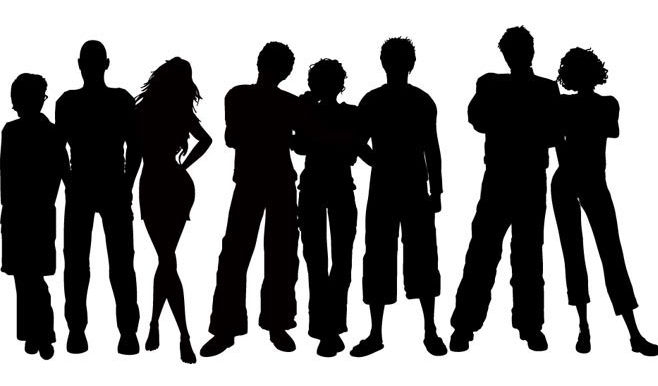It has been proven that the strongest indicator of success in therapy is the quality of relationship between the client and the therapist. So when it comes to teens, it is not surprising that a positive working relationship is correlated with improved therapeutic outcomes. In these instances, while it’s unclear whether the engagement in therapy and improved outcomes are a direct result of the relationship, or whether effectiveness leads to the positive relationship, it is clear that the relationship matters.
So then, what qualifies as a good relationship? Research has focused on the components of this relationship, often called the therapeutic alliance, which can be described as bond, tasks, and goals, regardless of theoretical orientation (Bordin, 1979). Clinical social workers Britt Rathbone and Julie Baron dug into the latest research to explore these components to include in their guide for professionals to better connect with teens, What Works With Teens. Here’s some of what they found:
The bond matters. How many of us had any training whatsoever in how to forge, cultivate, or sustain the emotional connection that constitutes a healthy therapeutic alliance? Imagine that you are meeting a new person for the first time in a social setting. Do you immediately feel bonded and begin sharing personal details about your life and history? Of course not. You are much more likely to tiptoe into personal details, all the while monitoring the other’s reactions for signals on how to proceed. Now, imagine the adolescent who is ambivalently attending his or her first counseling session. Therapists tend to jump right in, often alienating the teenager in their enthusiasm for “getting the job done.” In our experience, this is rarely effective with any but the most motivated, self-referred adolescents. We must allow time and attention for the bond to develop.
Skill matters. Adolescents are particularly sensitive to, and able to sniff out, “fakes” or “phonies” (so well demonstrated in the classic teen novel The Catcher in the Rye). They will often amplify unacknowledged therapist errors, resulting in a complete closing down of trust and connection. So therapeutic skills (primarily listening) are necessary for an alliance to build. Notice that we say “unacknowledged” therapist errors. Thankfully, adolescents tend to be quite forgiving when professionals admit what they do not know, and when they recognize and try to correct their mistakes. Skills are therefore interwoven with the bond. For example, imparting information too quickly is often counterproductive and may negatively impact the developing bond (as in the teen who thinks “She just doesn’t get it” when the well-meaning therapist begins to provide advice and problem solving before fully understanding the nature of the problem). Just as ineffective is providing inaccurate information (“pot use will kill you”). Paradoxically, announcing that we do not know something and will look it up—or even better, asking the adolescent to educate us and then verifying the information independently—is a surefire way to strengthen the bond.
Goals matter. Coming up with a collaborative agreement about the focus and direction of therapy is important, as is the teen’s perception that the therapist is helping to achieve the goals that they’ve agreed on. Imagine going to a trainer at a gym with a specific goal of losing weight, and then being given a recommendation for a high-calorie diet and a list of power-lifting exercises that will build massive muscle. This is exactly what occurs with many youth who are referred to therapy. They have goals, which may or may not be articulated, and the counselors—or the people who have referred them for counseling—have different goals, which may be irrelevant to the adolescent. Many times a counselor’s goals are influenced by parents, teachers, court systems, or other outside organizations, and that influence may further irritate the young person who isn’t sure about the value of counseling to begin with. We are not suggesting that the adults’ goals do not matter; we just firmly believe that lasting change cannot be forced. The way to build an alliance is to start with the goals of the young person, which usually share common elements with the goals of the others. There are almost always several routes to change. A vast body of research has addressed the effect of student-teacher relationships on outcomes (Hargreaves, 2000; McGavin, 2004; Bergin & Bergin, 2009; OECD, 2010; Reichert & Hawley, 2013); to summarize the research findings, the benefits are reciprocal. With greater connection to students and a more secure student-teacher relationship, not only do students attain greater knowledge of subject matter and achieve greater academic outcomes, but educators report greater job satisfaction, translating to lower stress and a more enjoyable overall experience with their students.
Next week we’ll explore Rathbone and Baron’s relational teaching approaches in the context of the widening gender gap in academic achievement between boys and girls. Stay tuned.
For more on engaging relationships with teens, check out What Works with Teens.
References
Bergin, C., & Bergin, D. (2009). Attachment in the classroom. Educational Psychology, 21, 141–170.
Bordin, E. S. (1979). The generalizability of the psychoanalytic concept of the working alliance. Psychotherapy Theory, Research and Practice, 26, 17–25.
Hargreaves, A. (2000). Mixed emotions: Teachers’ perceptions of their interactions with students. Teaching and Teacher Education, 16, 811–826.
McGavin, H. (2004). Tips from the top. The Times Educational Supplement, no. 4565, p. 8.
OECD. (2010). PISA 2009 results: What makes a school successful? Resources, Policies, and Practices, 4.
Reichert, M., & Hawley, R. (2013). Relationships play primary role in boy’s learning. Phi Delta Kappan Magazine, 94(8), 49–53.


 2024 Peace Playbook: 3 Tactics to Avoid Clashes with Your Partner
2024 Peace Playbook: 3 Tactics to Avoid Clashes with Your Partner